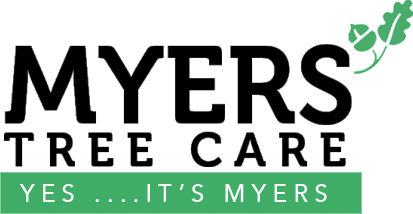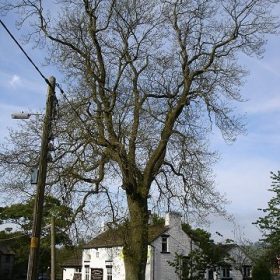Tree Pruning Information: Tree Surgeon Services in Stockport
Tree pruning is the most common operation undertaken by the majority of tree surgeons and quality tree care professionals in Stockport. Although forest trees grow quite well with only nature to lend a hand, trees within the urban environment require a higher level of care to maintain their health, safety and aesthetics.
All tree pruning should be undertaken with a high level of understanding of how the tree will respond to each cut that is made. Improper trimming and lopping can cause damage that can be irreversible and have a detrimental effect on the tree’s life span.
Example of Tree Pruning Works In Manchester & Stockport
Important Safety Operations When Tree Pruning
The pruning of trees can be a very dangerous operation and should be undertaken by a qualified and experienced tree surgeon. If the target cannot be reached from ground level, then the employment of a professional company is by far the safest choice for your own personal safety, other members of the public, your property and the health of your trees.
As a professional Arboricultural Association approved tree surgeon in Stockport, Myers Tree Care is fully qualified to advise on the correct course of action needed to improve the health, safety and aesthetics of your trees.
Why are trees pruned?
Because each cut has the potential to change the growth of the tree, no branch should be removed or clipped without good reason. Common reasons for pruning are to remove dead wood, rubbing or crossing branches, to eliminate contact with structures or to eliminate hazards.
Trees are also trimmed to increase light levels below the canopy, increase air penetration and to reduce leverage on the structure of the tree. In most cases, trees are pruned as a corrective or preventative measure and this work should be undertaken by a qualified and approved tree surgeon if the best interests of the tree are to be ensured.
Routine thinning does not necessarily improve the health of a tree. Trees produce a dense crown of leaves to manufacture the sugar that they use as energy for growth and development. The removal of foliage through too much lopping and trimming can reduce the tree’s ability to harness and store energy reserves and, more importantly, heavy and un-professional pruning can load the tree with a significant strain that can bring about an irreversible decline in its condition.
Yet if people are to co-exist in an urban environment then trees have to be modified from time to time. City environments do not mimic natural forest conditions and safety is of major concern. Also, we want to plant trees to complement other landscape features. Correct pruning, with a deep understanding of tree biology, can maintain tree health and structure whilst enhancing the aesthetic and economic value of our landscape.
When does a Tree need pruning?
Most routine tree maintenance work to remove weak, un-sound or dead limbs can be undertaken by the tree surgeon at any time during the year with little effect to the tree.
As a general rule, growth is maximised and wound closure is fastest if pruning takes place before the spring growth flush. Some trees such as Maples and birches tend to “bleed” if branches are cut in early spring. Although this may be un-slightly it is of little consequence to the tree.
Some tree diseases, such as Oak Wilt, can be spread when wounds allow spores access into the tree. Susceptible trees should not be pruned during active transmission periods and a conscientious and professional tree surgeon will advise customers of these kinds of constraints when quoting for work.
Heavy pruning should be avoided just after the spring flush. At that time, trees have just expended a great amount of energy to produce foliage and early shoot growth. Removal of a large percentage of foliage and early shoot growth at that time could be detrimental to the tree’s health. A professional tree surgeon with sound knowledge of trees would discourage work being done at the wrong time and make the customer aware of the best action to take in the interest of the tree’s well-being.
Tree Pruning definitions
Crown Thinning
Crown thinning is carried out by the tree surgeon when the removal of a small portion of secondary and small live branches is needed to produce a uniformed density of foliage around an evenly spaced canopy, this is usually undertaken to a specified percentage of material to be removed.
Crown thinning is commonly confined to broad-leaves species but can also be undertaken on certain conifer species. Crown thinning includes the action of crown cleaning and should not alter the overall size or shape of the canopy/tree.
The most common of reasons for crown thinning are to allow additional light to pass through the tree, to reduce wind resistance for structural reasons or to lessen the weight of heavy branches.
Crown Lift (or Crown Raise)
Crown lifting is when the tree surgeon carries out the selective removal of the lowest branches of the tree and prepares other lower branches for future removal.
The correct Arboricultural practices dictate that crown lifting should not normally include the removal of large branches growing directly from the trunk as this causes large wounds that may jeopardise the long-term future of the tree.
The most common reasons for crown lifting are to provide more light and to give clearance for high-sided vehicles when the tree is adjacent to the highway. In the UK common practice defines clearance for vehicles as 5.2 metres (17ft), and for pedestrians 2.5m (8ft).
Crown Reduction
Crown reduction is a technique used by the tree surgeon to reduce the height and / or spread of the crown of a tree by the removal of the ends of branches whilst maintaining the tree’s natural shape and ensuring a natural and even flow of branch diameters from the tips to the major branches.
Crown reduction is usually undertaken to aid the reduction in leverage on structurally un-sound trees or to give clearance from buildings.
Crown Clean (or Dead Wooding)
Crown cleaning is the removal of dead, dying, diseased, broken, crowded, weakly attached or low-vigour branches as well as climbing plants such as Ivy. Crown cleaning is often carried out by the tree surgeon in conjunction with crown thinning.
Making correct pruning cuts
The final cut made by the tree surgeon should be done made outside the branch collar at an angle that is opposite to that of the branch bark ridge.
Wound Dressings
Arboriculture specialists very commonly used wound dressings in the sixties and seventies, however, research has shown that these dressings do not reduce decay and rarely prevent insect or disease infections.
Tree Surgeons today do not undertake or recommend this very dated operation. If a dressing must be used for cosmetic reasons, then a thin coat of non-toxic material should be applied, or even some soil will tone down the cut surface area.







